Matrixes for Wildlife-Habitat Relationships
in Oregon and
Washington
Authors
The information that is contained on this CD-ROM is the result of a 4-1/2
year effort to bring together what we know or what we think we know about our
wildlife resource in Oregon and Washington. The data presented are the
result of either expert scientific panels or existing literature. The
kinds and types of information presented was guided and determined in
cooperation with five interagency scientific teams. The extensive
research, data development and coordinating resulting in the completion of this
CD-ROM could not have been completed without the dedication of the following
authors:
 Thomas O'Neil - Tom has spent 25 years working on ecological issues in the Pacific Northwest
and has degrees from the University of Montana and the University of Toledo. Currently, Tom is the Director of
the
Northwest Habitat Institute (NHI). Previously, he has worked as a Wildlife Ecologist for ODFW, Research Division;
University of Chicago's Argonne National Laboratory; Montana Power Company; as a Wildlife Biologist for the USFS,
and as an Administrator for the Jeep Corporation. Tom also co-authored the Atlas of Oregon Wildlife and has written
over 40 other publications or documents. Tom has an interest in computers, remote sensing, and information systems,
and has been a Certified Wildlife Biologist with The Wildlife Society for 18 years. In his spare time, Tom enjoys
the outdoors, music, traveling, and working on his 1949 Willys Jeep.
Thomas O'Neil - Tom has spent 25 years working on ecological issues in the Pacific Northwest
and has degrees from the University of Montana and the University of Toledo. Currently, Tom is the Director of
the
Northwest Habitat Institute (NHI). Previously, he has worked as a Wildlife Ecologist for ODFW, Research Division;
University of Chicago's Argonne National Laboratory; Montana Power Company; as a Wildlife Biologist for the USFS,
and as an Administrator for the Jeep Corporation. Tom also co-authored the Atlas of Oregon Wildlife and has written
over 40 other publications or documents. Tom has an interest in computers, remote sensing, and information systems,
and has been a Certified Wildlife Biologist with The Wildlife Society for 18 years. In his spare time, Tom enjoys
the outdoors, music, traveling, and working on his 1949 Willys Jeep.
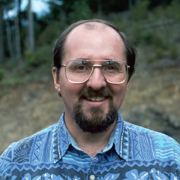 David H. Johnson - David has been involved in the natural resource field for 24 years.
He has held forestry, wildlife biologist, and habitat scientist positions with the Minnesota Department of Natural
Resources, BLM, USFWS, ODFW, and WDFW. He has Associate degrees in Natural Resource Management and Civil
Engineering, a B.A. in Biology with a Minor in Archaeology, and an M.S. in Wildlife Science. He has a passion
for owls and is deeply involved with international owl conservation. He loves traveling and reading historical
exploration accounts, and for therapy from it all, builds and paddles sea kayaks and cedar-strip canoes.
David H. Johnson - David has been involved in the natural resource field for 24 years.
He has held forestry, wildlife biologist, and habitat scientist positions with the Minnesota Department of Natural
Resources, BLM, USFWS, ODFW, and WDFW. He has Associate degrees in Natural Resource Management and Civil
Engineering, a B.A. in Biology with a Minor in Archaeology, and an M.S. in Wildlife Science. He has a passion
for owls and is deeply involved with international owl conservation. He loves traveling and reading historical
exploration accounts, and for therapy from it all, builds and paddles sea kayaks and cedar-strip canoes.
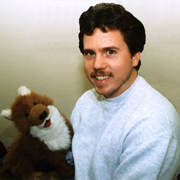 Charley Barrett - Charley has been specializing in geographic information systems (GIS) for
9 years. He earned an M.S. degree in Geography at Oregon State University (OSU) in 1998. At OSU, Charley studied GIS,
cartography, and rural planning while also teaching computer mapping and GIS labs. As an undergraduate at Towson University,
Maryland, he majored in geography and economics with an emphasis in environmental planning. Currently the GIS
Program Director at the Northwest Habitat Institute, Charley provides GIS
support and analysis for its mapping projects and administers its local area
network and Internet site. Charley's recreational interests include bicycling, motorcycling,
and picking the 5-string banjo.
Charley Barrett - Charley has been specializing in geographic information systems (GIS) for
9 years. He earned an M.S. degree in Geography at Oregon State University (OSU) in 1998. At OSU, Charley studied GIS,
cartography, and rural planning while also teaching computer mapping and GIS labs. As an undergraduate at Towson University,
Maryland, he majored in geography and economics with an emphasis in environmental planning. Currently the GIS
Program Director at the Northwest Habitat Institute, Charley provides GIS
support and analysis for its mapping projects and administers its local area
network and Internet site. Charley's recreational interests include bicycling, motorcycling,
and picking the 5-string banjo.
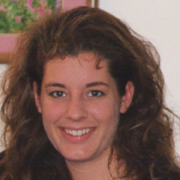 Marla Trevithick - Marla received a B.A. in Computer Science from Western Oregon University
(WOU) and has worked with the ODFW and WDFW for the past 3 years. She was the data systems and digital technologies
co-lead for the project, as well as technical user support for her workplace. Currently, she is working with the U.S.
Geological Survey's Forest and Rangeland Ecosystem Science Center as a computer specialist. Marla's interests
include both indoor and outdoor soccer, downhill skiing, crafts, and traveling. She has also been an assistant
coach for the WOU women's soccer team for 2 years. Having grown up in Alaska gave her an appreciation for the
outdoors, and she enjoys exploring Oregon's landscapes.
Marla Trevithick - Marla received a B.A. in Computer Science from Western Oregon University
(WOU) and has worked with the ODFW and WDFW for the past 3 years. She was the data systems and digital technologies
co-lead for the project, as well as technical user support for her workplace. Currently, she is working with the U.S.
Geological Survey's Forest and Rangeland Ecosystem Science Center as a computer specialist. Marla's interests
include both indoor and outdoor soccer, downhill skiing, crafts, and traveling. She has also been an assistant
coach for the WOU women's soccer team for 2 years. Having grown up in Alaska gave her an appreciation for the
outdoors, and she enjoys exploring Oregon's landscapes.
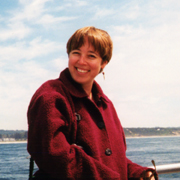 Kelly Anne Bettinger - Kelly received her B.S. in Wildlife Management from Virginia Tech
in 1989 and her M.S. in Wildlife Biology from Oregon State University in 1996. She has worked on a variety
of projects on both U.S. coasts studying screech owls, spotted owls, red-cockaded woodpeckers, sea snakes, sea
turtles, and rare plants. Her current interest centers on breeding bird community studies and she has spent
the past 7 field seasons surveying birds in various habitats throughout Oregon. Kelly has been involved in most
aspects of the project including compiling literature, organizing and moderating expert panel sessions, filling out
life history matrixes, reviewing the matrices for quality control, providing literature and database information to
chapter authors, and editing chapters. She also enjoys participating in Christmas Bird Counts, running a Breeding
Bird Survey in eastern Oregon, and collecting old natural history books.
Kelly Anne Bettinger - Kelly received her B.S. in Wildlife Management from Virginia Tech
in 1989 and her M.S. in Wildlife Biology from Oregon State University in 1996. She has worked on a variety
of projects on both U.S. coasts studying screech owls, spotted owls, red-cockaded woodpeckers, sea snakes, sea
turtles, and rare plants. Her current interest centers on breeding bird community studies and she has spent
the past 7 field seasons surveying birds in various habitats throughout Oregon. Kelly has been involved in most
aspects of the project including compiling literature, organizing and moderating expert panel sessions, filling out
life history matrixes, reviewing the matrices for quality control, providing literature and database information to
chapter authors, and editing chapters. She also enjoys participating in Christmas Bird Counts, running a Breeding
Bird Survey in eastern Oregon, and collecting old natural history books.
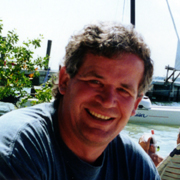 Chris Kiilsgaard - Chris received a B.S. in Botany from Montana State University and an M.S.
in Biogeography from Oregon State University. He has 18 years of experience in mapping vegetation and wildlife
habitats in the Pacific Northwest. Chris is the Director for Mapping Research for the Northwest Habitat Institute.
Presently he is compiling a map of wildlife habitats for the 7-state Columbia River Watershed and mapping upland
vegetation in the Oregon Coast Range. His other professional interest is habitat restoration. In his spare time he
enjoys tennis, vegetable gardening, and scheming to own a vineyard.
Chris Kiilsgaard - Chris received a B.S. in Botany from Montana State University and an M.S.
in Biogeography from Oregon State University. He has 18 years of experience in mapping vegetation and wildlife
habitats in the Pacific Northwest. Chris is the Director for Mapping Research for the Northwest Habitat Institute.
Presently he is compiling a map of wildlife habitats for the 7-state Columbia River Watershed and mapping upland
vegetation in the Oregon Coast Range. His other professional interest is habitat restoration. In his spare time he
enjoys tennis, vegetable gardening, and scheming to own a vineyard.
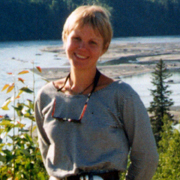 Madeleine Vander Heyden - Madeleine is a wildlife biologist currently living in Jackson,
Wyoming, but considers Oregon her home. She graduated with an M.S. in Wildlife Ecology from Oregon State
University in 1997 and received her B.S. from the University of Wisconsin in 1987. She has worked on a variety
of wildlife species, including research on spotted owls, small mammals, bald eagles, and black bears. Madeleine's
experience contributed to the digital matrixes for habitat elements, species key ecological functions, and
management activity links to the habitat elements. Her special areas of interest include wildlife-habitat
relationships, carnivore ecology, and public lands management.
Madeleine Vander Heyden - Madeleine is a wildlife biologist currently living in Jackson,
Wyoming, but considers Oregon her home. She graduated with an M.S. in Wildlife Ecology from Oregon State
University in 1997 and received her B.S. from the University of Wisconsin in 1987. She has worked on a variety
of wildlife species, including research on spotted owls, small mammals, bald eagles, and black bears. Madeleine's
experience contributed to the digital matrixes for habitat elements, species key ecological functions, and
management activity links to the habitat elements. Her special areas of interest include wildlife-habitat
relationships, carnivore ecology, and public lands management.
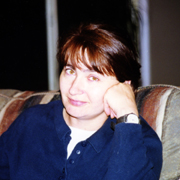 Eva Greda - Eva graduated from Western Washington University with a B.S. degree in Cell Biology.
While at Western, she was involved in a research project attempting to find a sequence homology between the Caudal
gene of the fruit fly Drosophila melanogaster, and cDNA of the wasp Nasonia vitripenisis. Eva has
worked for more than a year with the WDFW and previously with the Washington State Attorney General's office regarding
tobacco litigation. Her contributions for this project included recording and entering the results from the scientific
panel process, compiling a portion of the Life History matrix, and co-authoring of the salmon-wildlife chapter.
Her interests are gardening, painting, playing the piano, and walking her dog, Dana.
Eva Greda - Eva graduated from Western Washington University with a B.S. degree in Cell Biology.
While at Western, she was involved in a research project attempting to find a sequence homology between the Caudal
gene of the fruit fly Drosophila melanogaster, and cDNA of the wasp Nasonia vitripenisis. Eva has
worked for more than a year with the WDFW and previously with the Washington State Attorney General's office regarding
tobacco litigation. Her contributions for this project included recording and entering the results from the scientific
panel process, compiling a portion of the Life History matrix, and co-authoring of the salmon-wildlife chapter.
Her interests are gardening, painting, playing the piano, and walking her dog, Dana.
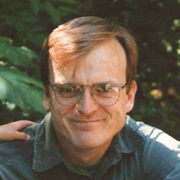 Derek Stinson - Derek received his B.S. in Biology at Framingham State College, and his M.S. in
Zoology from Washington State University. His diverse interests and work experiences have included shrews, bats,
galliforms, raptors, insects, and wetland birds. He spent 4 years working on endangered birds, fruit bats, and
migrant shore and waterbirds in the Mariana Islands, and wrote the recovery plan for the Micronesian Megapode. More
recently he has worked on rare species and conservation planning of forest wildlife in Washington. Derek's expertise
was used to assist in compling information for the life history matrix. He enjoys gardening, birding, painting, and
other forms of celebrating and caring for creation.
Derek Stinson - Derek received his B.S. in Biology at Framingham State College, and his M.S. in
Zoology from Washington State University. His diverse interests and work experiences have included shrews, bats,
galliforms, raptors, insects, and wetland birds. He spent 4 years working on endangered birds, fruit bats, and
migrant shore and waterbirds in the Mariana Islands, and wrote the recovery plan for the Micronesian Megapode. More
recently he has worked on rare species and conservation planning of forest wildlife in Washington. Derek's expertise
was used to assist in compling information for the life history matrix. He enjoys gardening, birding, painting, and
other forms of celebrating and caring for creation.
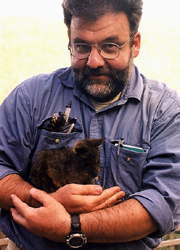 Bruce G. Marcot - Bruce is a Research Wildlife Ecologist with the Ecosystems Processes Research Program, USDA
Forest Service, in Portland, Oregon, USA. He holds a B.S. and M.S. in Natural Resources from Humboldt State University,
California, and a Ph.D. in Wildlife Science from Oregon State University. He participates in projects dealing
with analysis of wildlife population viability, assessment of biodiversity, ecologically sustainable land-use
planning, and on international conservation issues. His interests include
traveling & camping, archeoastronomy,
classical music composition, birding, pen and ink artwork, photography, poetry, writing, motorcycling, linguistics,
epistomology & ontology, computers & artificial intelligence programming, and other realms.
Bruce G. Marcot - Bruce is a Research Wildlife Ecologist with the Ecosystems Processes Research Program, USDA
Forest Service, in Portland, Oregon, USA. He holds a B.S. and M.S. in Natural Resources from Humboldt State University,
California, and a Ph.D. in Wildlife Science from Oregon State University. He participates in projects dealing
with analysis of wildlife population viability, assessment of biodiversity, ecologically sustainable land-use
planning, and on international conservation issues. His interests include
traveling & camping, archeoastronomy,
classical music composition, birding, pen and ink artwork, photography, poetry, writing, motorcycling, linguistics,
epistomology & ontology, computers & artificial intelligence programming, and other realms.
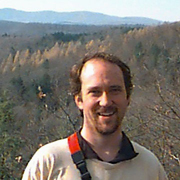 Pat Doran - Pat earned M.S. degrees in Ecology and Environmental Science from Indiana University.
His research focused on the relationship between land cover and the reproductive success of songbirds.
While with our project, Pat was involved in database and chapter development, and scientific panels, as well as
project planning. Pat left the project to pursue a Ph.D. in Ecology at Dartmouth College. In his free time, Pat
enjoys bird watching, hiking and backpacking, traveling, and just about any athletic activity.
Pat Doran - Pat earned M.S. degrees in Ecology and Environmental Science from Indiana University.
His research focused on the relationship between land cover and the reproductive success of songbirds.
While with our project, Pat was involved in database and chapter development, and scientific panels, as well as
project planning. Pat left the project to pursue a Ph.D. in Ecology at Dartmouth College. In his free time, Pat
enjoys bird watching, hiking and backpacking, traveling, and just about any athletic activity.
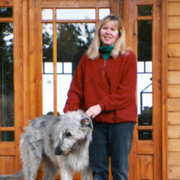 Susan Tank - Susan is originally from Grants Pass, Oregon and received a B.A. in Biology
from Lewis & Clark College in Portland, Oregon in 1976 and a M.S. in
Wildlife Resources from the University of Idaho in 1983. She worked for
the WDFW in the mid-80's, then left to begin working in the area of
wildlife and environmental toxicology first at Western Washington
University in Bellingham, then Clemson University in South Carolina. Since
1992, Susan has lived in Sisters, Oregon where she has her own wildlife
consulting business and works with her husband in their environmental
toxicology consulting firm. In her spare time she likes to go birding,
read, hike, snowshoe, and play with her numerous pets.
Susan Tank - Susan is originally from Grants Pass, Oregon and received a B.A. in Biology
from Lewis & Clark College in Portland, Oregon in 1976 and a M.S. in
Wildlife Resources from the University of Idaho in 1983. She worked for
the WDFW in the mid-80's, then left to begin working in the area of
wildlife and environmental toxicology first at Western Washington
University in Bellingham, then Clemson University in South Carolina. Since
1992, Susan has lived in Sisters, Oregon where she has her own wildlife
consulting business and works with her husband in their environmental
toxicology consulting firm. In her spare time she likes to go birding,
read, hike, snowshoe, and play with her numerous pets.
While initiating this effort, Dr. Laurie Wunder helped tremendously with identifying and defining information
to be considered in the Wildlife-Habitat types, Structural Conditions, Habitat Elements, and
Life History matrixes, as well as assisting with the scientific panel process (picture not available).
[ Top ]
|